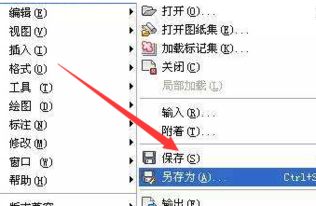wb安装方法

重新开机后右上角点击输入法,在下面打开的界面可以点击配置


左下角shift可快速切换五笔和英文 输入
john@john-hp:~$ sudo apt-get install fcitx-table-wbpy
john@john-hp:~$ sudo apt-get install fcitx-googlepinyin
john@john-hp:~$ sudo apt-get install fcitx-table-all
1.打开终端,在终端中输入:
sudo wget http://www.xiit.cn/wp-content/uploads/2011/03/vissible-ibus.tar.gz
tar -zxvf vissible-ibus.tar.gz
sudo cp vissible.db /usr/share/ibus-table/tables
sudo cp vissible.gif /usr/share/ibus-table/icons
2.重启ibus(ibus可以在系统-首选项-键盘输入法中打开),点击输入法图标-首选项-输入法-选择输入法-汉语,选择其中的极点五笔输入法,OK。
onlyoffice
john@john-hp:~/xilinx$ sudo snap install onlyoffice-desktopeditors
https://www.onlyoffice.com/zh/download-desktop.aspx

安装pyenv
git clone https://github.com/pyenv/pyenv.git ~/.pyenv
这一步需要联网,有时候服务器没连接外网的情况下,需要自行下载pyenv.zip包,解压到~/.pyenv 文件夹下。
cd ~/.pyenv && src/configure && make -C src
同样安装pyenv-virtualenv:
git clone https://github.com/pyenv/pyenv-virtualenv.git
(
p
y
e
n
v
r
o
o
t
)
/
p
l
u
g
i
n
s
/
p
y
e
n
v
−
v
i
r
t
u
a
l
e
n
v
放置到
(pyenv root)/plugins/pyenv-virtualenv 放置到
(pyenvroot)/plugins/pyenv−virtualenv放置到(pyenv root)/plugins/pyenv-virtualenv
打开~/.bashrc,增加以下4行,然后source ~/.bashrc
#export PATH=~/.pyenv/bin:KaTeX parse error: Expected 'EOF', got '#' at position 6: PATH #̲export PYENV_RO…PATH
eval “
(
p
y
e
n
v
i
n
i
t
−
)
"
e
v
a
l
"
(pyenv init -)" eval "
(pyenvinit−)"eval"(pyenv virtualenv-init -)”
install pipenv
before install, delete all pipenv remain files
john@john-hp:/usr/lib/python3/dist-packages$ pip3 install pipenv
Defaulting to user installation because normal site-packages is not writeable
Requirement already satisfied: pipenv in /usr/lib/python3/dist-packages (11.9.0)
john@john-hp:/usr/lib/python3/dist-packages$ sudo mv pipenv pipenv1
john@john-hp:/usr/lib/python3/dist-packages$ sudo mv pipenv-11.9.0.egg-info pipenv-11.9.0.egg-info1
john@john-hp:/usr/lib/python3/dist-packages$ pip3 install pipenv

add pipenv path
/home/john/.local/bin
virtualenv
john@john-hp:~/yolov3$ ~/.local/bin/pipenv --python 3.7.4
Warning: Python 3.7.4 was not found on your system…
Would you like us to install CPython 3.7.4 with Pyenv? [Y/n]: y
Installing CPython 3.7.4 with /home/john/.pyenv/bin/pyenv (this may take a few minutes)…
✔ Success!
⠦ Installing python…
Creating a virtualenv for this project…
Pipfile: /home/john/yolov3/Pipfile
Using /home/john/.pyenv/versions/3.7.4/bin/python3.7m (3.7.4) to create virtualenv…
⠹ Creating virtual environment…created virtual environment CPython3.7.4.final.0-64 in 166ms
creator CPython3Posix(dest=/home/john/.local/share/virtualenvs/yolov3-vjGGpW9A, clear=False, no_vcs_ignore=False, global=False)
seeder FromAppData(download=False, pip=bundle, setuptools=bundle, wheel=bundle, via=copy, app_data_dir=/home/john/.local/share/virtualenv)
added seed packages: pip24.0, setuptools68.0.0, wheel==0.42.0
activators BashActivator,CShellActivator,FishActivator,NushellActivator,PowerShellActivator,PythonActivator
✔ Successfully created virtual environment!
Virtualenv location: /home/john/.local/share/virtualenvs/yolov3-vjGGpW9A
Warning: Your Pipfile requires python_version 3.6, but you are using 3.7.4 (/home/john/.local/share/v/y/bin/python).
$ pipenv --rm and rebuilding the virtual environment may resolve the issue.
$ pipenv check will surely fail.

delete again pipenv --rm and delete pipfile file manually, reinstall again:

Create a new project using Python 3.7, specifically:
$ pipenv --python 3.7
Remove project virtualenv (inferred from current directory):
$ pipenv --rm
Install all dependencies for a project (including dev):
$ pipenv install --dev
Create a lockfile containing pre-releases:
$ pipenv lock --pre
Show a graph of your installed dependencies:
$ pipenv graph
Check your installed dependencies for security vulnerabilities:
$ pipenv check
Install a local setup.py into your virtual environment/Pipfile:
$ pipenv install -e .
Use a lower-level pip command:
$ pipenv run pip freeze
PROTOCOL_BUFFERS_PYTHON_IMPLEMENTATION=python
john@john-hp:~/yolov3$ echo PROTOCOL_BUFFERS_PYTHON_IMPLEMENTATION=python >> .env
john@john-hp:~/yolov3$ cat .env
PROTOCOL_BUFFERS_PYTHON_IMPLEMENTATION=python

(yolov3) john@john-hp:~/yolov3/yolov3_keras$ python3 yolo_video.py –image
TypeError: Descriptors cannot not be created directly.
If this call came from a _pb2.py file, your generated code is out of date and must be regenerated with protoc >= 3.19.0.
If you cannot immediately regenerate your protos, some other possible workarounds are:
- Downgrade the protobuf package to 3.20.x or lower.
- Set PROTOCOL_BUFFERS_PYTHON_IMPLEMENTATION=python (but this will use pure-Python parsing and will be much slower).
More information: https://developers.google.com/protocol-buffers/docs/news/2022-05-06#python-updates

(yolov3) john@john-hp:~/yolov3/yolov3_keras$ export PROTOCOL_BUFFERS_PYTHON_IMPLEMENTATION=python
(yolov3) john@john-hp:~/yolov3/yolov3_keras$ python3 yolo_video.py –image
opencv-contrib-python==4.6.0.66
(yolov3) john@john-hp:~/yolov3/yolov3_keras$ pip3 install opencv-contrib-python==4.6.0.66 -i https://pypi.tuna.tsinghua.edu.cn/simple
Traceback (most recent call last):
File “yolo_video.py”, line 76, in
detect_video(YOLO(**vars(FLAGS)), FLAGS.input, FLAGS.output)
File “/home/john/yolov3/yolov3_keras/yolo.py”, line 205, in detect_video
fontScale=0.50, color=(255, 0, 0), thickness=2)
cv2.error: OpenCV(4.10.0) 👎 error: (-5:Bad argument) in function ‘putText’
Overload resolution failed:
- img marked as output argument, but provided NumPy array marked as readonly
- Expected Ptrcv::UMat for argument ‘img’











![[论文翻译]使用 BERT 检测安卓恶意软件](https://i-blog.csdnimg.cn/direct/a69f2aabb49d4c7bbdab3479475e40d1.png)








